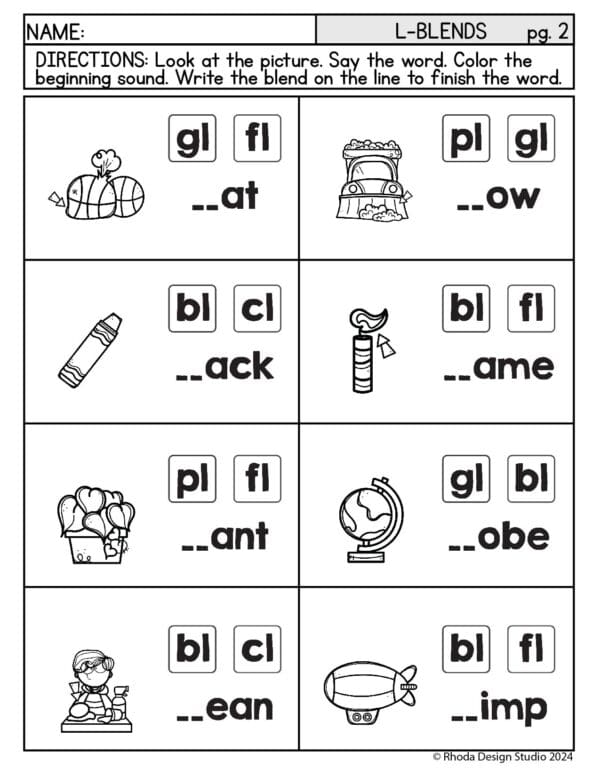Free L-Blend Worksheets: Practice Beginning Consonant Blends
Simple and easy to use L-blends phonics pages are a great way to help learners use the beginning blend to read each word.
There are 4 pages of blends that include gl-, bl-, cl, pl, and fl. Picture clues will help students to sound out words. Learners will color the box that contains the blend for the word and then write the blend on the line to complete the word.

The free L-Blends phonics pages are at the bottom of the post. Click on the button to download the full set or each individual picture to download that one page.
Color the L-Blend Phonics Pages
Unlike digraphs or vowel teams, blends make separate sounds. They are tricky for many young readers or struggling readers. Practice can help increase fluency.
Phonics lessons are a part of learning to read and a key component in the Science of Reading. Using these worksheets will give your young learners extra practice and a chance to start mastering blended sounds.
Let’s talk about l-blends and how they can help us read better.
Imagine you’re in a kitchen, and you want to make a yummy smoothie. You reach for some fruit, like strawberries, bananas, and blueberries. When you mix them together, you create a delicious blend! In reading, we have something similar called l-blends. These are special groups of letters that come together to make sounds like “bl,” “cl,” “fl,” “gl,” “pl,” and “sl.”
Let’s break it down. Think about the word “blend.” It starts with the sound “bl.” Now, let’s think of other words with the same sound. How about “block,” “blue,” and “blast”? These words all start with “bl,” and that’s what makes them l-blends.
NOTE: Kids love learning when it is bright, engaging, and interactive. These lessons are also available in digital format. Students and teachers both love them. Check them out in my TPT Shop.
When we practice l-blends, we’re learning to recognize these special sounds in words. This helps us become better readers because we can sound out words more easily. For example, if we see the word “flag,” we know that “fl” makes the first sound, and then we add the rest of the sounds to say the word.
We can practice l-blends by reading books, doing word puzzles, or playing fun games. The more we practice, the better we get at recognizing these sounds in words. And when we’re better at recognizing sounds, we become stronger readers!












